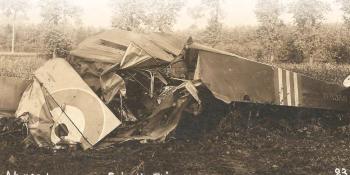In our occasional Conflict Archaeology series, Robin Schäfer explains the background to the final battle for Hill 80 and the excavation of the German First World War strongpoint in Wijtschate, Flanders, revealing touching and tangible reminders of the bitterest of struggles.which is
Wijtschate, or Whitesheet (as it was known to British troops), is a town situated on a chain of hills extending south-west and north-east around the city of Ypres in Flanders. Due to its elevated position on Messines Ridge, and its vicinity to the town of Ypres, Wijtschate and its so-called Wytschaete-Salient (German: Wytschaete-Bogen) became a strategic fortress and the scene of heavy fighting throughout the First World War.
War descended on Wijtschate on the night of 31 October 1914 with the arrival of the 6th Bavarian Reserve Division south of the small village. The lines were not yet closed and there was still a possibility the Allies would give way under pressure. Acting on direct orders from the Kaiser himself, Freiherr Maximilian von Speidel, the Bavarian Commander, immediately launched his men into the chaotic night attack.
Much was at stake here – there was the need to prove the fighting value of the four hastily …



